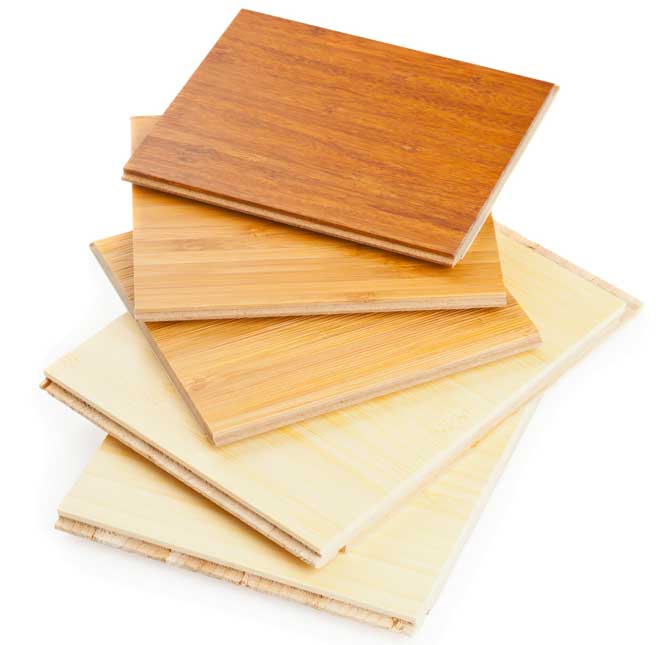Professional Comprehensive Building Materials Supplier
Introduction to Bamboo Flooring
- Categories:Building Material
- Author:
- Origin:
- Time of issue:2020-12-04 14:25
- Views:
Summary description:
Introduction to Bamboo Flooring
Summary description:
- Categories:Building Material
- Author:
- Origin:
- Time of issue:2020-12-04 14:25
- Views:
Homeowners considering new flooring have a wider variety of options than ever, including tile, carpeting, stone, resilient composites, and, of course, natural wood. Depending on the location in the house and the indoor decor, any of these selections may be the right choice. In certain rooms, many homeowners incline toward wood as the flooring material of choice for both aesthetics and serviceability.
A variety of hardwoods, from the domestic to the exotic, are available to meet the requirements of a wide range of tastes and budgets. In recent years, a traditional natural flooring material of the far east has increasingly captured market share that was once the domain of wood.

Naturally Non-Wood
Bamboo is technically a species of grass, not wood. When fully grown, however, it displays certain qualities similar to hardwood. For centuries, groves of mature bamboo have been harvested and the thick tubular trunks manually sliced into strips for use as flooring in Asia. Today, more advanced and accurate automated methods produce bamboo strips from fully-grown stalks.
After the individual strips are kiln-dried and selected for the color uniformity, they are glued together under pressure and heat. Multiple strips may be vertically laminated together for conventional solid flooring material, or they may be cross-laminated to form engineered flooring for enhanced dimensional stability even under heavy loading. Bamboo flooring strips are typically milled into standardized sizes and configurations such as tongue-and-groove and are available pre-finished or unfinished.
An installed bamboo floor delivers a high level of natural aesthetics and visual appeal that compares favorably with conventional hardwoods. To enrich color, bamboo may be subjected to a carbonizing process where the raw strips are steamed at a very high temperature to alter the composition of sugar and starches, shifting the coloration of the material. The duration of the steaming process determines the depth of the final shade.
Though it’s not sourced from hardwood trees like conventional flooring, bamboo shares many of wood’s classic virtues. While bamboo exceeds the benefits of hardwood in some respects, it also comes with some of the limitations of wood, too. Here’s a rundown of the specific pros and cons of bamboo.

Bamboo Advantages
- Excellent durability. Bamboo compares very favorably with conventional hardwoods typically utilized in flooring applications. Manufacturers’ specs generally state that a floor should last a minimum of 30 years to 50 years to be considered a “lifetime” product. In that respect, bamboo is equal or superior to other wood flooring alternatives. Bamboo has a hardness ranging from 1130 to 1640 on the Janka-Ball scale, the industry standard for rating wood durability. This places it well above pine and maple in hardness and durability and approximately equal to red oak, a very common choice for hardwood flooring. Also, consider the fact that bamboo is increasingly a preferred choice in commercial settings with high foot traffic and an equally high potential for wear and tear and other damage.
- Favorable economics. Bamboo is generally less expensive than most hardwoods, domestic or foreign. At the consumer level, the price of bamboo per square foot ranges from as low as $1.50 up to $7.00.
- Easy care and cleaning. Unlike some exotic hardwoods, bamboo imposes no unique or exceptional maintenance requirements. Nor does proper cleaning require the application of harsh or unconventional cleaning solutions or other specialized substances. Regular sweeping and/or vacuuming to remove surface grit that could dull the finish is standard procedure for any hardwood floor, including bamboo. Weekly damp mopping with water is also recommended. When required, the best DIY cleaning product is as simple as a natural mild solution of 1/4 cup of vinegar mixed with a quart of warm water.
- Color-coordinated and refinish-friendly. Bamboo’s natural blond hues are neutral and thus harmonize well with any indoor decor or color scheme. Sanding, staining, and sealing a solid bamboo floor to achieve darker shades, if desired, is a straightforward procedure utilizing standard refinishing methods that produce a predictable and stable color outcome.
- Environmental and conservation benefits. A great deal of hardwood sourced for flooring comes from stands of old-growth trees that may be 50 years of age or more. Replenishing these cut forests can take up to a half-century. Because bamboo grows much faster, however, most of the crop is harvested when the plant reaches maturity at only 5 to 6 years, making it a rapidly renewable “green” source of flooring material. Because cutting bamboo doesn’t kill the roots of the plant, cut areas recover fast and regrowth is abundant. Increased reliance on bamboo helps preserve slow-growing hardwood forests.
CONTACT US
Tel | 86-010-88082316
Email | aliciachn@outlook.com
BuildTech Corporation
China Building Materials Building, No. 11
Sanlihe Road, Haidian
Message
Please leave us a message, we will be at your service.
BuildTech Corporation © All Rights Reserved




